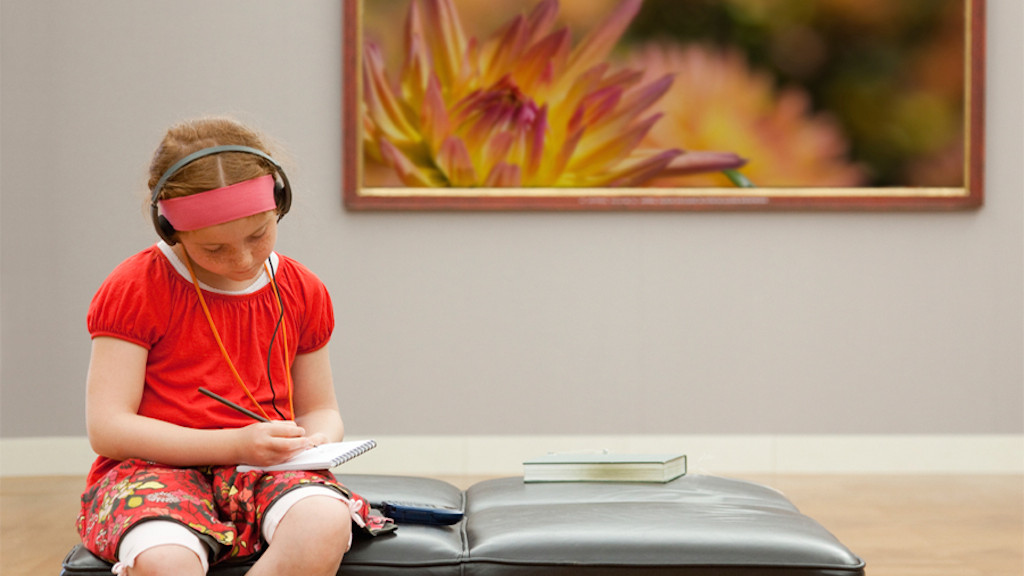Sarah Palferman established Minerva London to share her passion for culture and arts with young people of all ages and comes highly recommended from friends I know. She likes to inspire her pupils outside of the classroom to enrich their education and to teach them life skills by helping them to formulate their own opinions and ideas as this can only increase the children’s self-confidence and to broader their minds. Sarah developed this business on the back of an experienced history with children having worked for the last twenty years with children and young people on an individual or group basis using her background in education and psychology. You can spend the day with Dragons at the British Museum or find scenes from Shakespeare at Tate Britain. Sarah tells us in her own words more about how exposure to art can benefit your child. If you are in London this summer and looking for new activities for children, join Sarah and her team for one of their tours.
“The mind is not a vessel to be filled, but a fire to be ignited” – Plutarch
The quality of a child’s earliest encounters with culture is of paramount importance. A poor experience of anything can alienate the most open-minded among us. Done with sensitivity, however, an introduction to art offers the perfect opportunity for children to begin to formulate their own ideas and preferences, to develop skills of critical thought and self-expression, and to cultivate a livelong enjoyment in arts and the process of learning itself.
It is tempting to regale children with facts and figures in a gallery or museum; to focus on names and dates and a chronology of artistic movements. This is an almost sure-fire method for switching them off. That’s not to say that knowledge is unimportant. Knowledge, the logic that stitches facts into a meaningful fabric of understanding, provides context from which children can begin to explore concepts and ideas independently.
Teaser nuggets of fascinating fact provide the springboard from which we can encourage young people to think about what they are seeing. We can prompt with questions and withhold our own views to provide the space for children’s opinions and judgements to feel both valid and valued.
Children encountering Monet’s Antibes, billed by the artist as ‘sweetness itself’, and Degas’s Two Dancers, who have graced many a greetings card, will be startled by the fact that these works were once decried as ‘unfinished wallpaper’; the half-heated efforts of ‘lazy’ artists. Works by these radical rebels, admired by nearly 200,000 visitors annually in London’s Courtauld Gallery, are now revered in blockbuster exhibitions (such as that recently at the National Gallery and now to be found in the Philadelphia Museum of Art) for their spontaneity and the enchanting play of natural light.
Meeting Ophelia in Tate Britain (and the unfortunate model who may have caught the illness from which she perished while lying in a cold bath as Millais’ muse) serves as an introduction to the initially secretive Pre-Raphaelite Brotherhood. Therein lies scope for discussion of the potential clash between artistic realism and responsibility, framed by this group’s tackling of morally ambiguous subjects and the contemporary Victorians who reeled from them. Exploring moral dilemmas in art, as research shows, helps children to confront the challenges they encounter in their own lives.
Younger visitors to London’s galleries can find so much pleasure in such enigmatic works as Holbein’s The Ambassadors with its spookily distorted skull, in exploring the weird and wacky installations of Tate Modern, and in identifying the saints of the National Gallery’s abundant Renaissance panels once they have been given some simple hagiographic keys with which to unlock these (and even further delight in augmenting their vocabularies with the word ‘hagiographic’!).
With an appreciation that every creative decision made by an artist is a deliberate and conscious act, children will develop a spirit of inquiry in their encounters with visual art. The skills of independent thought thus acquired help children to develop their personalities, abilities and imaginations. They encourage them to form a sense of their own identities and to express themselves fully. All these foster an interest in the process of learning itself and have a demonstrable influence on wider academic attainment.
There is enormous pleasure to be found in exploring culture with children; in watching curiosities spark into life and fanning the flames of creative and independent thought. Far from silently contemplative spaces for adults already initiated in the joys of cultural exploration, then, art galleries should be teeming with young people and open minds.
Sarah Palferman is a private tutor and educational advisor. She is the founder of Minerva London Ltd, offering tailored adventures in art and culture to young people in London.
To find out more, please visit
or email

